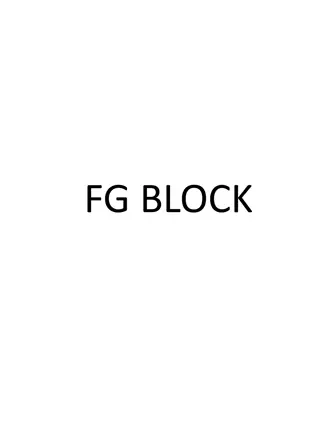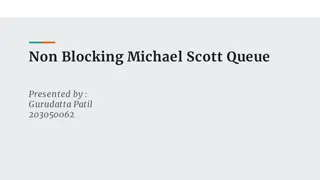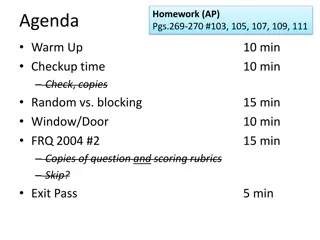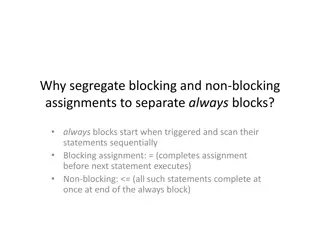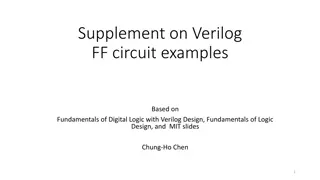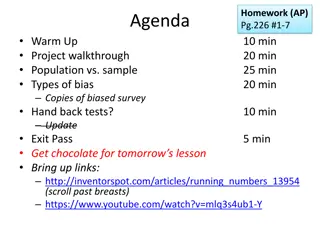Blocking in Experimental Design
Blocking in experimental design is a crucial technique used to control sources of variation in experiments. This method helps to manage nuisance parameters and ensure accurate and reliable results. Learn about the importance of blocking, examples of when it is used, and its implications for inference in statistical analysis.
Uploaded on Feb 20, 2025 | 0 Views
Download Presentation

Please find below an Image/Link to download the presentation.
The content on the website is provided AS IS for your information and personal use only. It may not be sold, licensed, or shared on other websites without obtaining consent from the author.If you encounter any issues during the download, it is possible that the publisher has removed the file from their server.
You are allowed to download the files provided on this website for personal or commercial use, subject to the condition that they are used lawfully. All files are the property of their respective owners.
The content on the website is provided AS IS for your information and personal use only. It may not be sold, licensed, or shared on other websites without obtaining consent from the author.
E N D
Presentation Transcript
What is Blocking? Blocking is: A way to control for a source of Variation in an Experiment. It may also refer to a Replication of the entire Experiment. It is usually included in the ANOVA Model as a term. Some people handle it in different ways. 2
Are Blocks Factors? Short answer: Sometimes. We may block on Gender in an experiment and in that case Gender is a factor. Long answer: Blocks are an indication that Experimental Units/Experimental Conditions vary from one run to the next. They are often nuisance parameters which we do not wish to confound with the Factors we are really interested in. 3
Examples Hospitals- Patient populations and facilities vary. Farms- Soil type and Environment vary. Greenhouses- Environmental variation. Batch-Batches of material may vary from one production run to the next. Basically any Replication of an entire Experiment done at various times/places. 4
Blocking and Inference Blocks Fixed- Inference is only to the experimental units/conditions under which the Experiment is run, i.e. to these Blocks. Blocks Random- Inference is to the experimental units/conditions for which these Blocks are representative (whatever that might reasonably be concluded to be). 5
Recall 5.21 with Day, Temperature and Pressure We can think of the entire Experiment with Temperature and Pressure as a Factorial Experiment, with the entire Experiment replicated on two different Days. In this case Day is Block. 6
Correct F-tests for Fixed Effects are by their Interaction with Day with Day Random 8
EMS Day Random and number of Days=d + + + + 2 2 PD 3 3 MS d P P 2 2 TD 3 3 MS d T T + + + + 2 2 PTD MS d PT PT 2 2 PD 3 MS PD 2 2 TD 3 MS TD + 2 2 PTD MS PTD 9
Allocation of effort If fixed effects were marginally significant, the EMS says to add Replications in more Blocks (Days). Be careful since Replications has multiple meanings. 10
What happens if we include Day in the Model but not the Day Interaction terms? (Author suggests this) 11
Why was Interaction no longer significant? Answer: We inflated the Mean Square Error for Temp*Pressure by pooling all of the Interaction terms into Error! Moral of Story: When deleting terms from the model you can get misleading results. 12















